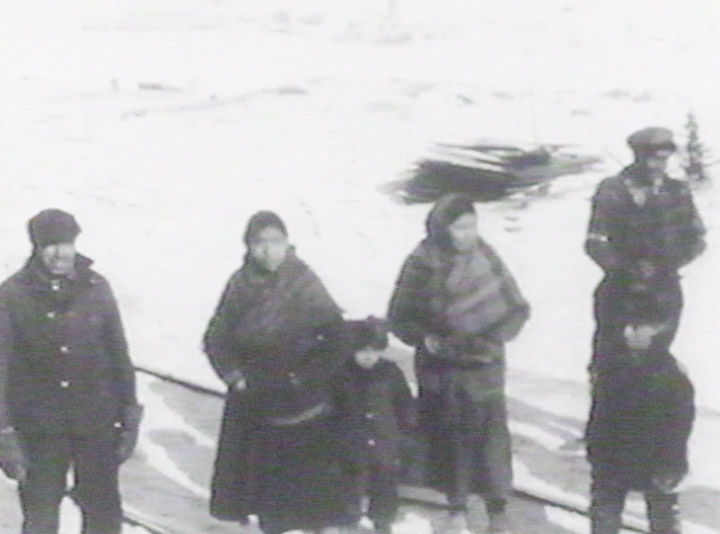

A Brief History of The Hudson Bay Railway
Agitation for the railway began during the 1870s, when prairie
farmers lobbied
for development of an ocean port on Hudsons Bay. Conceived as
a shorter route for
shipping grain to Europe, they did not clearly envision the problems
that should have
been more evident, or perhaps, they had hoped their vision would
provide a stimulus
to encourage greater participation in their activity. 'How could
they not know the
folly of their dream', proclaimed a newspaper article from the
time, since in truth,
the ruthless Arctic winters limit shipments to a season of only
about three months
per year, and a rail line built over glacial tundra requires a
great deal of maintenance
to level tracks which buckle and shift with each frost and thaw.
So it was, in 1880, that Hugh Sutherland received a charter
to build the Hudson
Bay Railway. He struggled until 1895 when he surrendered the charter
to Mackenzie
and Mann to form the nucleus of the Canadian Northern Railway.
In 1910, after much
discussion, and considerable opposition from Eastern interests,
the Laurier government
authorized funding to complete a rail line to Port Nelson, under
direction of the
Department of Railways and Canals. Track was laid as far as mile
340 by 1917, at which
time effort ceased with commencement of World War One.
The On-To-The-Bay Association, once again organized by prairie
farmers, was
founded in 1924 to press for completion of the Hudson Bay Railway.
Sir Fredrick
Palmer was called upon to evaluate Port Nelson as a harbour. He
advised the government
to abandon plans for Port Nelson and make Churchill its terminus
instead. Built at a
cost of somewhere between 50 and 75 million dollars, the last
spike was driven
into the Bay Line on April 3, 1929. During the winter of 1929-30,
track ties were
jacked up and a ballast of gravel was laid down to provide a firm
foundation bed
on the Sphagnum moss-covered permafrost. With construction of
a 2.5 million bushel
concrete and steel grain elevator on the bleak barren shore ~
towering above the
ancient fur trading post used for centuries ~ the rail line was
in full operation by 1931.
During the first decade of operation, a time of economic depression,
not more than
a dozen ships arrived each year. The railway ran once a week in
summer, and often
only once a month in winter. Thus, since the 'frozen asset' was
unable to return
reasonable interest on the large investment, it became necessary
for the Federal
Government to subsidize Canadian National Railways, which operated
the line on its
behalf, at a loss nearly every year. Yet, while the high expectations
of the Hudson Bay
Railway have never been fulfilled, it has been instrumental in
the development of
northern resources, and in providing transportation for people
and supplies to the
region; creating communities which are unique and very interesting
to explore.
In July 1997, the Federal Government transferred ownership
of The Port of Churchill
and the Hudson Bay Railway to OmniTRAX Inc., based in Denver,
Colorado.
(OmniTRAX paid $10 Canadian, or about $8 in U.S. currency, to
the government of
Canadian for the Port facilities). Since that time the Federal
Government has exerted
pressure on the Canadian Wheat Board to ship a minimum of 350,000
tonnes
through the northern port, and continues to contribute financial
assistance in
maintaining the rail line and harbour.
Current plans for the Port of Churchill include the import
of Siberian oil and gas
to help the U.S. meet its energy needs ~ For its part, Russia
has spent more than
$1 billion to upgrade the port of Murmansk.